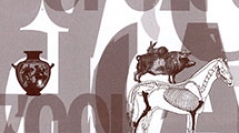

 Anthropozoologica
49 (2) - Pages 195-206
Anthropozoologica
49 (2) - Pages 195-206By its extraordinary adaptability to live in a hyper arid environment, the camel (Camelus dromaderius) is certainly the animal that best characterizes the Arabian Peninsula. If a rich ethnographic literature exists showing the economic importance of this species through the last two millennia, few archaeozoological remains confirm this importance. This article presents preliminary archaeozoological data (skeletal representation, ageing and sexing bone, bone traces) from two archaeological assemblages from Saudi Arabia: Dûmat al-Jandal (Al-Jawf oasis) and al-Yamâma (Al-Kharj oasis).
Zooarchaeology, skeletal profile, sexing and ageing camel bones, classical and medieval times, Saudi Arabia